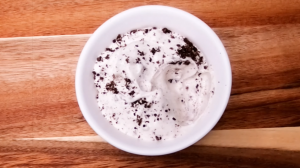Embrace the exquisite flavors of Japanese cuisine with this Mirin-glazed Halibut recipe. This dish pairs the delicate, flaky texture of halibut with a rich, sweet and savory mirin glaze. It's a way to bring restaurant-quality dining to your own kitchen. Balanced with the right amount of heat from red chiles, this dish promises a delightful gastronomic journey.
For this recipe, you might encounter some ingredients which aren't usually found in a typical household pantry. Mirin, a sweet Japanese rice wine, and Marudaizu Shoyu, a soy sauce made from whole soybeans, might need a special trip to an Asian supermarket. These ingredients lend a unique flavor profile that's hard to substitute. Sake is a Japanese rice wine which is also used for cooking.
Essential Ingredients for Mirin-glazed Halibut
Akasake mirin: A sweet Japanese rice wine that gives the dish its characteristic sweetness and depth.
Dry sake: Another Japanese rice wine, used in cooking for its subtle flavors.
Marudaizu shoyu: A rich, flavorful soy sauce made from whole soybeans.
Light brown sugar: Adds sweetness and helps in caramelization.
Hot red chiles: Brings heat to balance out the sweet and savory elements of the dish.
Halibut fillets: A type of flatfish, known for its mild, sweet flavor and perfect flaky texture.
Vegetable oil: Used for searing the halibut fillets.
One reader, Byron Benitez says:





This mirin-glazed halibut recipe is a game-changer! The flavors are perfectly balanced, and the fish turns out tender and succulent. The marinade adds a delightful sweetness, and the final touch of mirin sauce takes it to the next level. It's a must-try for any seafood lover!
Essential Techniques for Preparing Mirin-Glazed Halibut
Preheat the oven to 375 degrees F: This step is important to ensure that the oven is at the correct temperature for baking the halibut.
Marinating the halibut: The halibut should be marinated in the sauce for 20 minutes at room temperature, turning several times to ensure even coating and flavor absorption.
Cooking the halibut in the oven: After searing the halibut in the skillet, transfer it to the preheated oven and cook for about 5 minutes, or until the fish flakes easily with a fork.
Reducing the reserved marinade: After removing the halibut from the skillet, the reserved marinade should be boiled in a small saucepan over moderately high heat until slightly reduced, about 5 minutes.
Drizzling the halibut with the mirin sauce: Once the halibut is cooked and plated, it should be drizzled with the reduced mirin sauce before serving.
How To Make Mirin-Glazed Halibut
This mirin-glazed halibut is a simple flavorful dish, which incorporates Japanese staple mirin and shoyu for a tasty sauce that coats a pan-fried halibut.
Serves:
Ingredients
- 2cupsakasake mirin,or sweet oloroso sherry
- 1cupdry sake
- 1cupmarudaizu shoyu,or other soy sauce
- ¼cuplight brown sugar
- 5½hot red chilis,dried
- 4halibut fillets,skinless
- 2tbspvegetable oil
Instructions
-
Preheat the oven to 375 degrees F.
-
In a medium saucepan, bring the mirin and sake to a simmer.
-
Add the marudaizu shoyu and brown sugar, and simmer over low heat for 10 minutes, stirring occasionally.
-
Add the chilis and let cool to room temperature.
-
Pick out the chiles and transfer 1 cup of the sauce to an 8-inch square baking dish.
-
Refrigerate the remaining sauce for another use.
-
Add the halibut to the sauce in the baking dish and marinate at room temperature for 20 minutes, turning several times.
-
Remove the fish from the marinade and blot dry. Reserve the marinade.
-
Heat the oil in a large nonstick, ovenproof skillet.
-
Add the halibut and cook over moderately high heat for 2 minutes.
-
Turn the fillets.
-
Transfer the skillet to the oven and cook for about 5 minutes, until the fish flakes with a fork.
-
Meanwhile, pour the reserved marinade into a small saucepan and boil over moderately high heat for about 5 minutes until slightly reduced.
-
Transfer the halibut to plates and drizzle with the mirin sauce.
Recipe Notes
Marudaizu Shoyu is soy sauce made from whole soybeans, and its deeper flavor is superior to more commercial sauces made with defatted soy meal.
Nutrition
- Calories: 738.03kcal
- Fat: 12.83g
- Saturated Fat: 1.70g
- Trans Fat: 0.05g
- Monounsaturated Fat: 7.02g
- Polyunsaturated Fat: 2.57g
- Carbohydrates: 21.32g
- Fiber: 0.82g
- Sugar: 9.37g
- Protein: 81.94g
- Cholesterol: 199.92mg
- Sodium: 3786.10mg
- Calcium: 66.77mg
- Potassium: 2133.40mg
- Iron: 1.89mg
- Vitamin A: 85.54µg
- Vitamin C: 3.77mg
Expert Technique Tips for Perfecting Mirin-Glazed Halibut
When marinating the halibut in the mirin sauce, ensure that the fish is fully submerged to allow the flavors to penetrate evenly. If the sauce doesn't fully cover the fish, you can periodically spoon the marinade over the top. This will ensure that every bite is flavorful. Additionally, blotting the fish dry before searing creates a nice crust and prevents the fish from steaming in the pan. This step is crucial in achieving a restaurant-quality finish on your fish.
Time-Saving Tips for Making This Halibut Recipe
Prep ahead: Prepare the mirin glaze in advance and store it in the refrigerator for up to a week. This will save time when you're ready to cook the halibut.
Use pre-cut fillets: Purchase pre-cut halibut fillets to save time on prepping and cleaning the fish. This will streamline the cooking process and make it more efficient.
Multi-task: While the halibut is marinating, use that time to prepare any side dishes or accompaniments for the meal. This will help you make the most of your time in the kitchen.
Organize ingredients: Before you start cooking, make sure all the ingredients and cooking tools are organized and easily accessible. This will prevent any last-minute scrambling and save time during the cooking process.
Quick clean-up: Clean as you go to minimize the post-cooking clean-up. This will save time and make the overall cooking experience more enjoyable.
Substitute Ingredients For Mirin-Glazed Halibut Recipe
akasake mirin - Substitute with rice vinegar: Rice vinegar can provide a similar sweet and tangy flavor to the dish, although it may be slightly less sweet than mirin.
dry sake - Substitute with white wine: White wine can be used as a substitute for sake to provide a similar depth of flavor and acidity to the dish.
marudaizu shoyu - Substitute with regular soy sauce: Regular soy sauce can be used as a substitute for marudaizu shoyu, providing a similar salty and savory flavor to the dish.
light brown sugar - Substitute with honey: Honey can be used as a substitute for light brown sugar to add sweetness and a hint of caramel flavor to the glaze.
hot red chiles - Substitute with red pepper flakes: Red pepper flakes can be used as a substitute for hot red chiles to add heat and spice to the dish.
skinless halibut fillets - Substitute with cod fillets: Cod fillets can be used as a substitute for halibut, providing a similar mild and flaky texture to the dish.
vegetable oil - Substitute with olive oil: Olive oil can be used as a substitute for vegetable oil, adding a fruity and rich flavor to the dish.
How to Beautifully Present Mirin-Glazed Halibut
Elevate the halibut fillets: Gently place the halibut fillets on the plate, ensuring they are positioned elegantly and with precision.
Garnish with microgreens: Sprinkle a delicate arrangement of vibrant microgreens over the halibut to add a pop of color and a fresh, earthy flavor.
Drizzle with reduced mirin sauce: Carefully drizzle the reduced mirin sauce over the halibut, creating a beautiful and appetizing glaze that enhances the dish's visual appeal.
Incorporate edible flowers: Introduce edible flowers, such as nasturtiums or pansies, to add a touch of sophistication and a subtle floral note to the presentation.
Accompany with pickled ginger: Place a small portion of pickled ginger on the side of the plate to provide a visually striking and complementary element to the dish.
Use minimalist plating: Embrace a minimalist approach to plating, allowing the natural beauty of the halibut and its glaze to take center stage without overwhelming the presentation.
Highlight with a dusting of sea salt: Finish the dish with a light dusting of high-quality sea salt to enhance the flavors and add a touch of visual interest to the presentation.
Essential Kitchen Tools for Making Mirin-Glazed Halibut
Medium saucepan: A medium-sized pot with a handle and a lid, used for heating and simmering liquids or cooking small quantities of food.
Baking dish: A dish used for baking and serving food, typically made of glass, ceramic, or metal.
Skillet: A flat-bottomed pan with sloping sides, used for frying, searing, and sautéing foods.
Oven: A kitchen appliance used for baking, roasting, and heating food.
Nonstick skillet: A skillet with a nonstick coating that prevents food from sticking to the surface, making it easier to cook with less oil or fat.
Saucepan: A small, deep cooking pot with a handle and a lid, used for heating and cooking sauces, soups, and other liquids.
Storing and Freezing Mirin-Glazed Halibut: A Guide
To store leftover mirin-glazed halibut, allow it to cool completely to room temperature before placing it in an airtight container. Refrigerate for up to 3 days.
When ready to reheat, place the halibut in a baking dish and cover with foil. Bake in a preheated 350°F (175°C) oven for 10-15 minutes, or until heated through. Alternatively, you can reheat individual portions in the microwave for 1-2 minutes on high power.
If you want to freeze the mirin-glazed halibut, wrap each piece tightly in plastic wrap and then place them in a freezer-safe container or resealable bag. Label the container with the date and contents, and freeze for up to 2 months.
To thaw frozen mirin-glazed halibut, transfer the container from the freezer to the refrigerator and allow it to thaw overnight. Once thawed, reheat the halibut using the oven method described above.
Note: The texture of the halibut may change slightly after freezing and thawing, but the flavor should remain delicious. For best results, consume within 1 month of freezing.
The Best Methods for Reheating Leftover Mirin-Glazed Halibut
Preheat your oven to 350°F (175°C). Place the leftover halibut fillets in an oven-safe dish and cover with foil. Bake for 10-15 minutes, or until the fish is heated through and reaches an internal temperature of 145°F (63°C). This gentle reheating method helps prevent the fish from drying out and preserves its delicate texture.
For a quicker option, use the microwave. Place the halibut fillets on a microwave-safe plate and cover with a damp paper towel. Microwave on high for 1-2 minutes, or until the fish is heated through. Be careful not to overheat, as this can cause the fish to become rubbery.
If you have a steamer basket, you can also reheat the halibut using steam. Bring a pot of water to a boil, place the fish in the steamer basket, and cover. Steam for 3-5 minutes, or until the fish is heated through. This method helps maintain the fish's moisture and flavor.
For a pan-searing option, heat a small amount of vegetable oil in a non-stick skillet over medium heat. Add the leftover halibut fillets and cook for 1-2 minutes on each side, or until the fish is heated through and has a slight crisp on the exterior. Be cautious not to overcook, as this can dry out the fish.
To reheat the mirin sauce, pour it into a small saucepan and heat over low heat, stirring occasionally, until warmed through. If the sauce has thickened, you can add a small amount of water or sake to thin it out to your desired consistency.
Fascinating Facts About Mirin-Glazed Halibut
The mirin-glazed halibut recipe is a delicious and healthy option for seafood lovers. This dish combines the sweetness of mirin with the depth of marudaizu shoyu to create a flavorful glaze for the halibut. The use of hot red chiles adds a spicy kick to the dish, balancing out the sweetness. Additionally, marinating the halibut in the sauce helps infuse it with rich flavors. This recipe showcases the versatility of mirin and shoyu in creating a delectable glaze for fish. Enjoy this dish with a side of steamed vegetables or rice for a complete meal.
Is Making Mirin-Glazed Halibut at Home Cost-Effective?
This mirin-glazed halibut recipe is moderately cost-effective for a household. The key ingredients like mirin, sake, and shoyu may require an initial investment, but they can be used in various dishes. The halibut fillets can be a bit pricey, but the dish's overall cost is reasonable. The rich flavors and the versatility of the ingredients make it a worthwhile investment. I would rate this recipe an 8 for its flavor and simplicity. The approximate cost for a household of 4 people would be around $40-$50, making it a reasonable option for a special meal.
Is This Halibut Recipe Healthy or Unhealthy?
The mirin-glazed halibut recipe is a delicious and flavorful dish, but it may not be the healthiest option due to a few factors:
- The recipe uses a significant amount of mirin and sake, which are both high in sugar and alcohol content. This can add extra calories to the dish.
- Marudaizu shoyu, or whole soy bean soy sauce, is high in sodium. Excessive sodium intake can lead to health issues like high blood pressure.
- The recipe calls for light brown sugar, which is an added sugar and can contribute to weight gain and other health problems when consumed in excess.
- Vegetable oil is used for cooking the halibut, which can add extra calories and unhealthy fats to the dish.
To make this recipe healthier, consider the following suggestions:
- Reduce the amount of mirin and sake used in the sauce to lower the sugar and alcohol content. You can replace some of the liquid with low-sodium chicken or vegetable broth to maintain the volume of the sauce.
- Use a low-sodium soy sauce instead of marudaizu shoyu to reduce the overall sodium content of the dish.
- Replace the light brown sugar with a natural sweetener like honey or maple syrup, or simply reduce the amount of sugar used in the recipe.
- Instead of using vegetable oil for cooking the halibut, opt for a healthier cooking method like grilling, baking, or broiling. This will help reduce the amount of added fats in the dish.
- Serve the mirin-glazed halibut with a side of steamed vegetables or a fresh salad to add more nutrients and fiber to the meal.
- Use a smaller portion of the mirin sauce to reduce the overall calorie and sugar intake from the dish.
Our Editor's Opinion on This Mirin-Glazed Halibut Recipe
The mirin-glazed halibut recipe is a delightful fusion of flavors, combining the sweetness of mirin, the depth of marudaizu shoyu, and the kick of hot red chiles. The marinade infuses the halibut with a perfect balance of sweet and savory notes, while the final glaze adds a glossy finish. The cooking process ensures a moist and tender texture, elevating the dish to a culinary masterpiece. This recipe showcases the art of Japanese cuisine, and the use of marudaizu shoyu adds a rich umami flavor. It's a dish that promises to impress and delight with its complex yet harmonious taste profile.
Enhance Your Mirin-Glazed Halibut Recipe with These Unique Side Dishes:
Delicious Alternatives to Mirin-Glazed Halibut
Appetizer and Dessert Ideas to Complement Mirin-Glazed Halibut
Why trust this Mirin-Glazed Halibut Recipe:
This recipe features a perfect balance of flavors, combining the sweetness of akasake mirin and brown sugar with the savory depth of marudaizu shoyu and dry sake. The use of hot red chiles adds a subtle kick, enhancing the overall taste. The technique of marinating the halibut fillets in the flavorful sauce ensures that the fish absorbs the delicious flavors. Additionally, the note on the superior quality of marudaizu shoyu showcases the attention to detail and commitment to using authentic, high-quality ingredients. This recipe's thoughtful instructions and attention to detail inspire confidence in its trustworthiness.
Was this page helpful?
Have your own special recipe to share? Submit Your Recipe Today!













